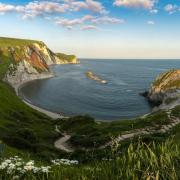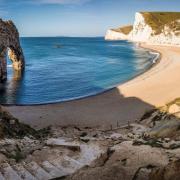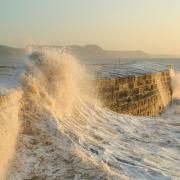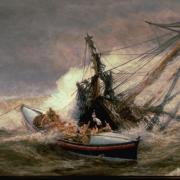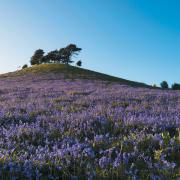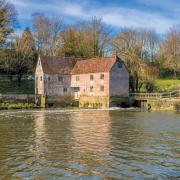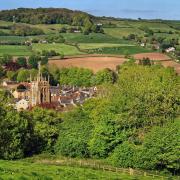Fifty years ago this month, on Monday 1st April 1974, the good people of Dorset woke up to find that their county had suddenly expanded.
It now included a sizeable chunk of Hampshire, and its population rose considerably courtesy of the fact that large towns like Bournemouth and Christchurch were included as part of this new acquisition.
This was no April Fool’s joke either, a lot of residents were angry. They felt that Hampshire was a wealthy county with several important well-connected towns including Southampton, Portsmouth, Winchester and, until that fateful day in 1974, Bournemouth. When it came to large Dorset towns, these consisted of Poole, Weymouth and the county town of Dorchester. The rest of this celebrated home of William Barnes and Thomas Hardy was viewed, at that time, as a rural backwater. To this day, it has no cities or motorways
The boundary changes were the result of a national plan to reorganise the structure of England’s local government and make administration easier. It had been talked about for years in the corridors of power but didn’t attract a lot of public interest. In the case of Dorset and Hampshire, it meant pulling Bournemouth, Christchurch and Poole together into one large and recognisable urban area and a single centre of population. Half a century later, it is the unitary authority of Bournemouth, Poole and Christchurch (BCP) Council, while the rest of the county is managed by Dorset Council.

Many had initially thought it to be of little consequence. ‘I went to bed a Hampshire Hog and woke up a Dorset Dumpling and that was about it,’ said one woman that I spoke to. Others, however, took a very different view. They felt they had been arbitrarily stripped of their identity as residents of what they saw as the rather grand county of Hampshire and, worse still, they’d been lumped in with a bunch of west-country bumpkins.
At the time, snobbishness and prejudice were rife among those in Hampshire who tended to feel that they were culturally a cut above and more sophisticated than their Dorset neighbours. Hampshire was closer to London, it had superior facilities and was far more in tune with the arts.
Photographer, art dealer and property consultant Paul Watts was 21 years old when the county boundary moved, and was working at an estate agent in Christchurch. He admits that he didn’t take kindly to find himself suddenly living in Dorset having grown up proud of his Hampshire heritage. ‘Hampshire was seen as infinitely preferable to being associated with those oiks and bumpkins out west,’ he recalls. ‘Dorset, to us at least, had no standing in the world.’

Bournemouth-based playwright Peter John Cooper agrees. In 1974 he was 23 and working in theatres in his native Hampshire, the county to which he felt ‘Bournemouth rightly belonged.’
He remembers the seaside town from the days when it seemed populated by retired Colonels in bathchairs. ‘It was a slightly stuffy part of my county of birth where, as a child, we visited on Sunday coach trips to ride on its trolleybuses. It was the home of retired servants of the Raj, an old people’s town. Dorset (or rather, Poole) had a different much more work-a-day atmosphere with its quarrying and fishing. Dorset was a foreign country. We even spoke with a different accent.’

Patricia Marchiori-White, retired academic principal at Bournemouth’s Southbourne School of English, says she still refuses to write the word Dorset on Bournemouth addresses. ‘We were not born in that county, and the people in Bournemouth were never consulted. It was a fait accompli. Hampshire was rich and noted for its facilities including outstanding education. Dorset was poor, so when the boundaries were changed suddenly Dorset was getting money spent on it left, right and centre, including the new Police Headquarters!’
Back in 1974 the practical problems of moving Bournemouth and Christchurch into Dorset seemed a fairly minor inconvenience, requiring just a few changes to letterheads and business cards. On a personal level though, many residents felt angry, arbitrarily denied a part of their heritage and, above all, unconsulted.
When I first came to live in Bournemouth a dozen years after it was unceremoniously made a part of Dorset, I would frequently meet refuseniks who still insisted that as far as they were concerned the town was and would always be a part of Hampshire.

I remember interviewing proud Hampshire pop star Reg Presley of The Troggs back in the 1990s. Some 20 years on from the boundary change he was still expressing outrage that Bournemouth had been taken from his beloved Hampshire. Sitting backstage at the town’s Pavilion Theatre, he told me: ‘It’s still part of Hampshire as far as I am concerned. I’ve been coming to Bournemouth for years and it was always a Hampshire resort.’
Even now, a full half a century later, there are signs of resistance in the town in names like Bournemouth’s celebrated West Hants Tennis Club, and the indignation that can be sensed when discussing the matter, particularly with some of the town’s older residents.
Look carefully and you can still find evidence of the old order. Not least at the big gyratory road system and roundabout at Westbourne. Until 1st April 1974 this was the Hampshire/Dorset border and it is still officially known as County Gates.
The original County Gate was the adjacent junction of The Avenue and Poole Road. It marked the pedestrian entrance to the Branksome Towers Estate, the road leading to the lavish baronial mansion of landowner and politician Charles Packe MP who had bought and developed the land in the mid-19th century. Some see Packe as almost the founder of modern Bournemouth. Amazingly, the arched pedestrian entranceway to his estate on the old county border still survives; it was dismantled and rebuilt by volunteers from the Society of Poole Men at nearby Branksome Park between 1986 and 1990.

Meanwhile, should you be interested, the coastal boundary between Dorset and Hampshire can now be found just to the east of Highcliffe at Chewton Bunny along an unmarked line that runs from the beach inland along a stream known as the River Chew flowing past the luxury five-star Chewton Glen Hotel and Spa, which sits just on the Hampshire side of the border.
The Bunny is an interesting location. It’s where in 1912 the Nobel prize-winning physicist Marie Curie, famous for her experiments with radioactive metals and pioneering treatments for cancer, came on a secret holiday to recuperate after an operation. She spent two months living at Highcliffe’s Mill House sited on what is now the Dorset side of the river.
While in the 1990s, maverick film director Ken Russell favoured the Hampshire side of the river not far from his New Forest home for wild and often naked summer parties.








